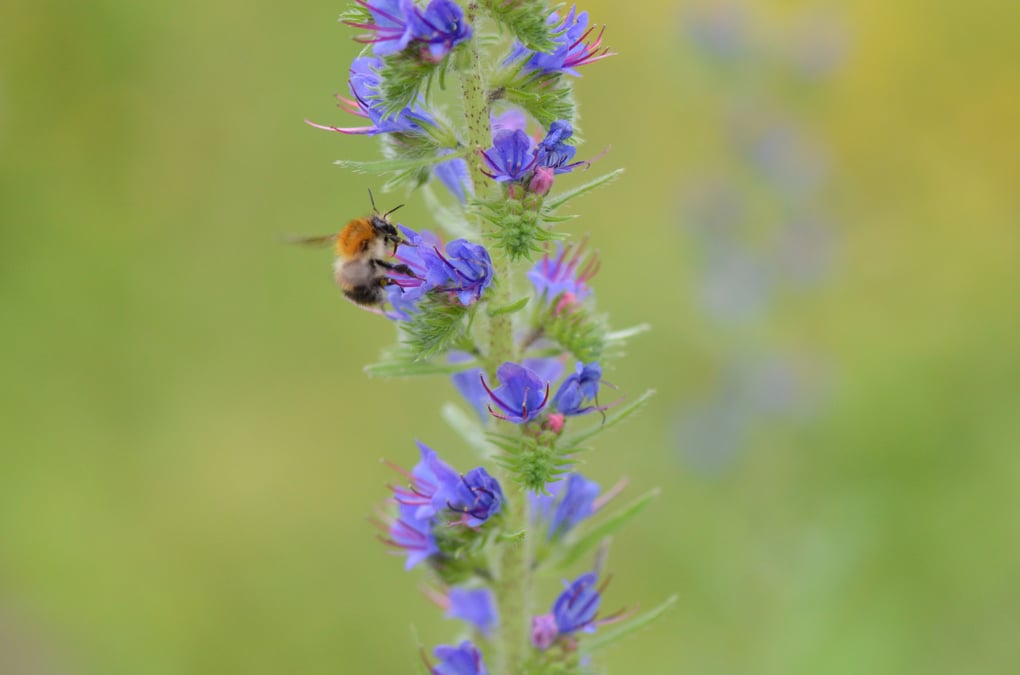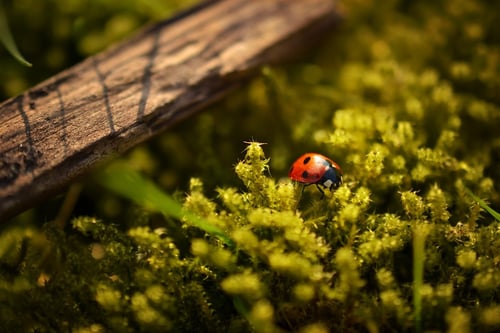
Beneficial insects are relatively new on the cultural radar, but they’ve been doing their job faithfully for thousands of years. It’s time we take them seriously and give them some help in return.
The insect has a troubled image. From the locust of Biblical proportions to aphids, the gardener’s bane, our buggy friends … well, bug us.
In an agricultural setting, insect pests shoot right past annoying and become downright dangerous, jeopardizing entire crops. Because of this – oh, and because they look weird and have a tendency to swarm and can kill you and stuff – we’ve lumped the good in with the bad.
Unfortunately, we need a lot of those insects we would dismiss outright. From pollination to soil improvement to pest control, beneficial insects matter. So it’s important to figure out how they work.
To be fair, asking “how beneficial insects work” is kind of like asking “how Mars keeps afloat.” The answer involves so many different factors that it’s kind of difficult to sum them up in one blog post. (And yes, we know Mars does not actually float, so save your physics snobbery for someone else.)
Nevertheless, we thought we’d step in and offer some clarity on how beneficial insects work today.
What Is a Beneficial Insect?
 The first step in answering the question of how beneficial insects work is to get clear on a definition. Essentially, it’s any insect that helps us achieve something good, that helps us in our human-approved efforts to meet our own goals and to perpetuate a healthy natural ecology.
The first step in answering the question of how beneficial insects work is to get clear on a definition. Essentially, it’s any insect that helps us achieve something good, that helps us in our human-approved efforts to meet our own goals and to perpetuate a healthy natural ecology.
Unfortunately, many of us can’t see that because we’re just so bothered by bugs.
“Now that we’ve moved into urban environments where close quarters and hygiene are at a premium,” entomologist Jeffrey Lockwood told Popular Science, “we find that the vast majority of our interactions with insects are negative in that they are the things that are invading our homes and our private spaces – our kitchens and bedrooms.”
The problem with that is, it’s all backwards. We’ve moved into their homes. (Remember, we’re from Africa, y’all.)
In fact, according to the National Pest Information Center, “Out of nearly one million known insect species, only about one to three percent are ever considered pests.” Of the rest of them, some are neutral – and some help us out a whole bunch.
What Do Beneficial Insects Do?

“There are many insects found on agriculture land [that] are not threat to the crop production but beneficial to the farmers in different aspects,” explains the research team behind Beneficial Insects and their Value to Agriculture, published in the Research Journal of Agriculture and Forestry Sciences.
Understanding how beneficial insects work means recognizing their roles as:
- Natural enemies to pest insects
- Pollinators
- Scavengers
- Weed killers
- Soil builders
Some insects play more than one of these roles, keeping soil healthy, removing dead matter that might otherwise build up, keeping the pest population in check and promoting abundant reproduction in plants.
Critically, though bees get all the credit, there are many more types of beneficial insects, and not all of them play all of these roles. Some play one, two or three, but without a biodiverse selection of beneficial insects, we can’t hope to achieve the ecological results we’re looking for … for the bugs and for ourselves.
Too bad, then, that we’ve destroyed their habitats, paving over natural landscapes in favor of offices, homes and shopping malls. In so doing, we’ve destroyed their nesting sites, decimated their food stores and made reproduction more difficult – and that’s before we take into account the massive doses of chemicals and pesticides they receive from us every day.
How Can We Promote Beneficial Insects?
 Today, it’s critical that we not only protect existing habitats for pollinators and beneficial insects, but that we build new ones as well. Our cities have destroyed huge swaths of former insect range, and bringing that space back for them is an excellent way to promote their wellbeing.
Today, it’s critical that we not only protect existing habitats for pollinators and beneficial insects, but that we build new ones as well. Our cities have destroyed huge swaths of former insect range, and bringing that space back for them is an excellent way to promote their wellbeing.
Interested in learning more about how beneficial insects work and what you can do to help them? Get in touch with Ecogardens today to learn more about green roofs, rooftop gardens and other sustainable systems to help our bug buddies.
We look forward to chatting bugs and biodiversity with you today.

